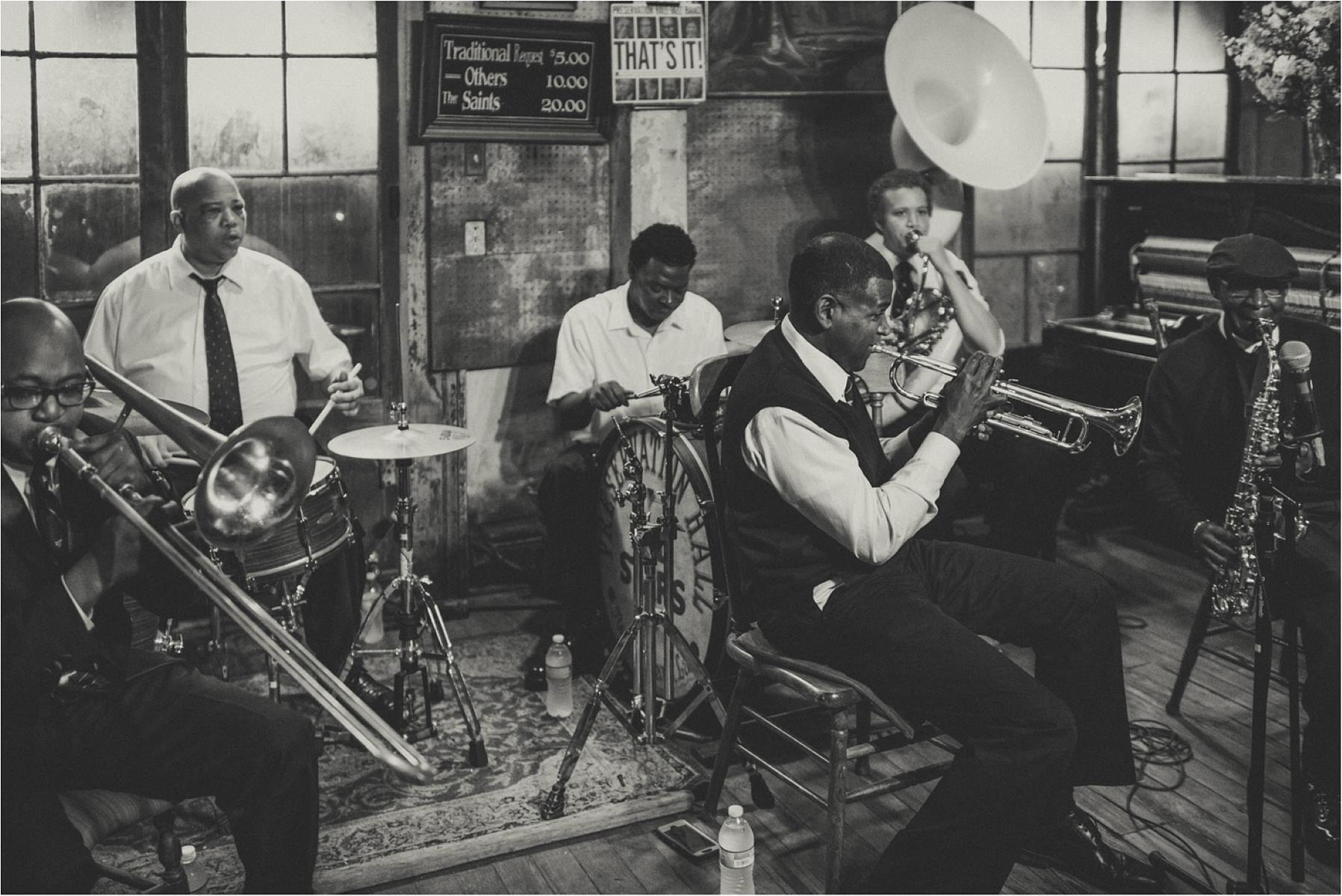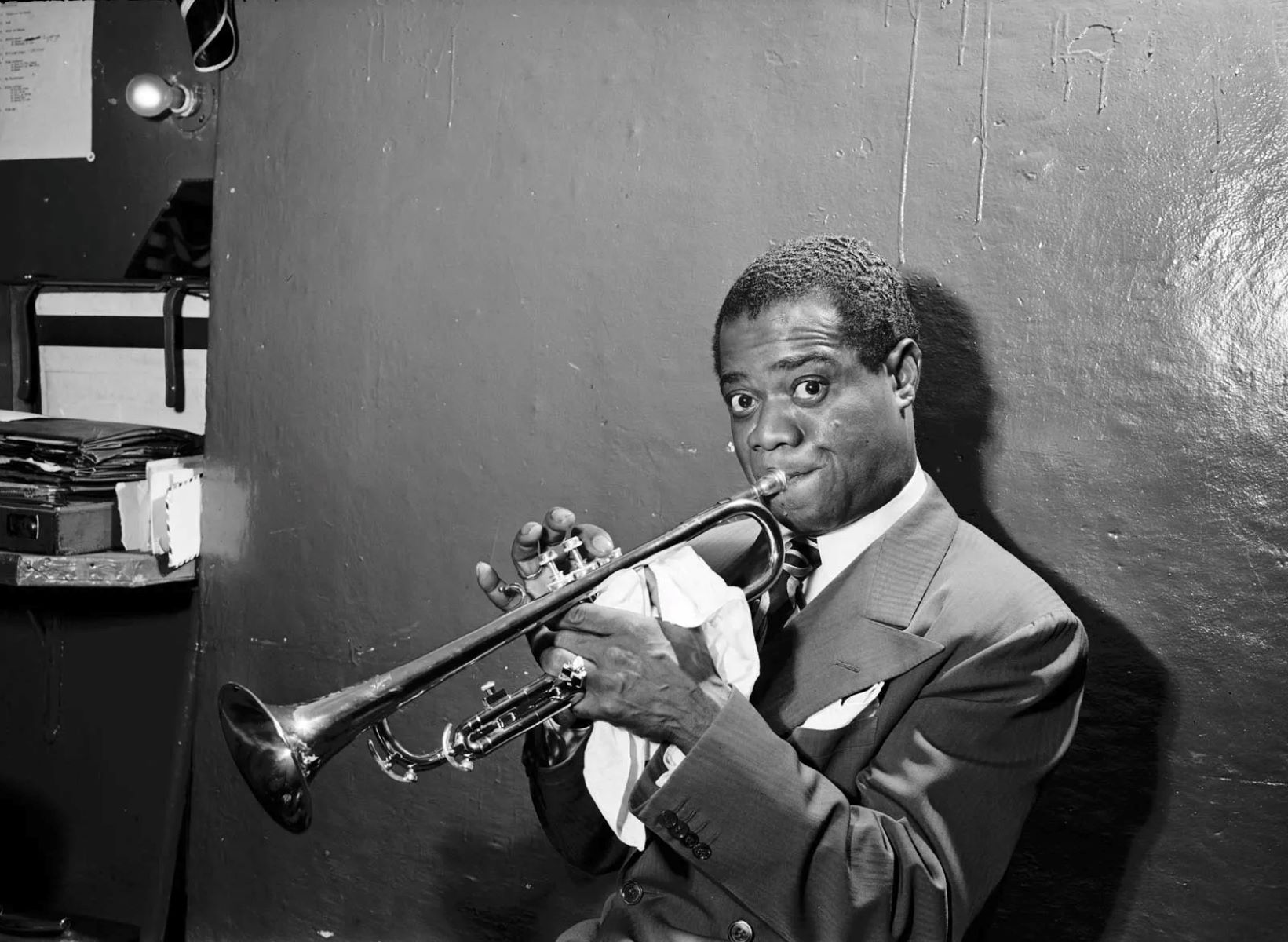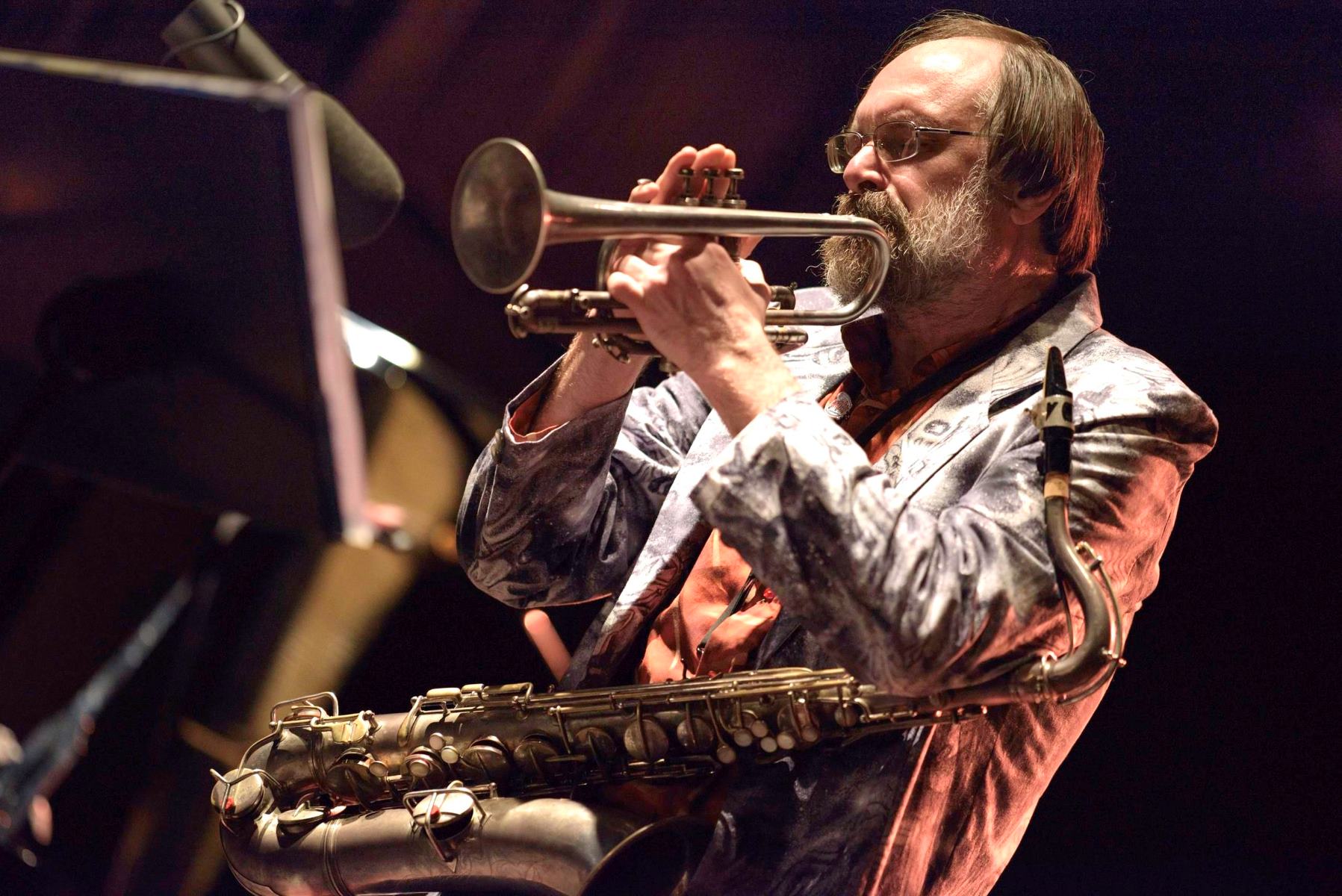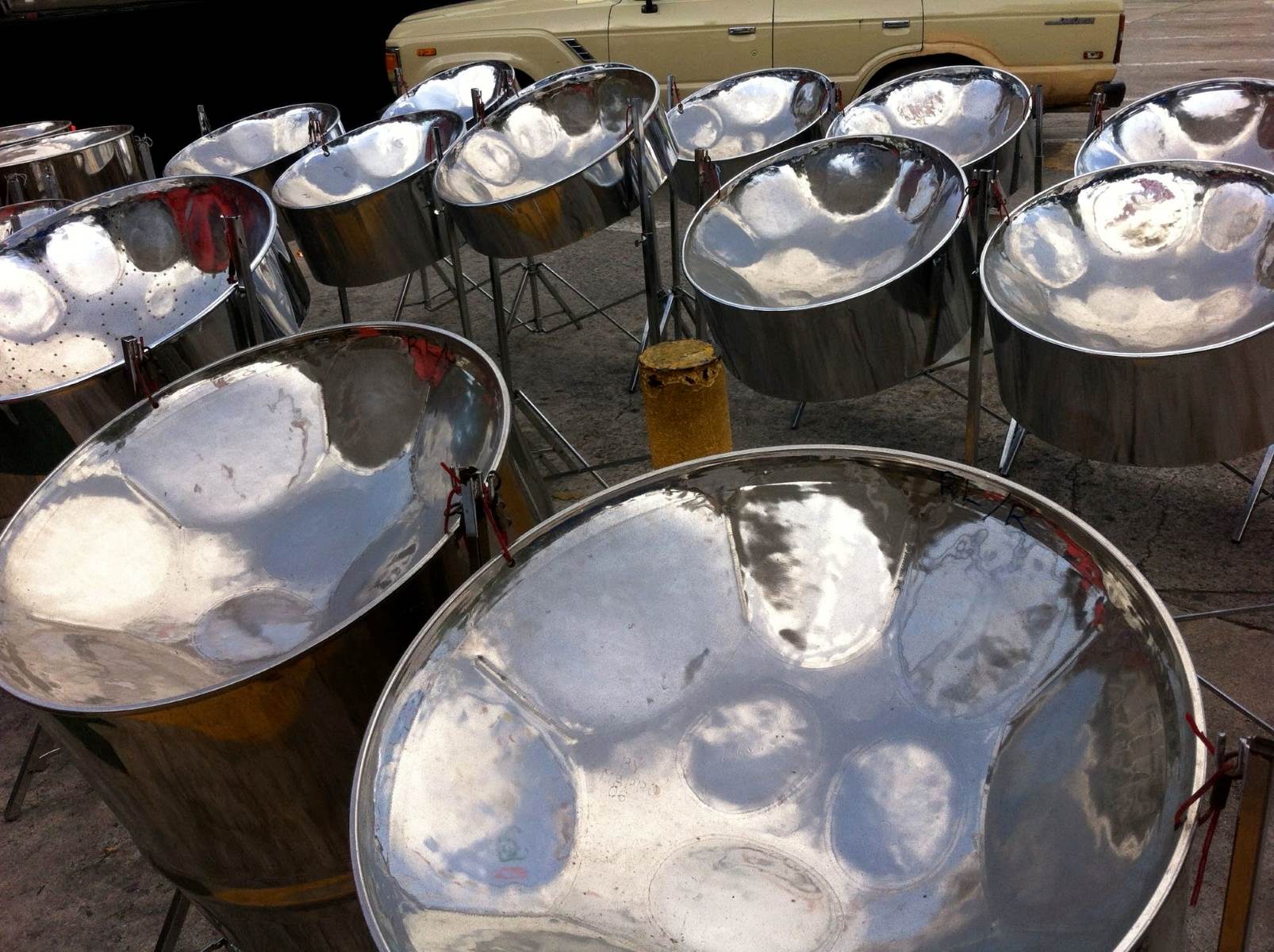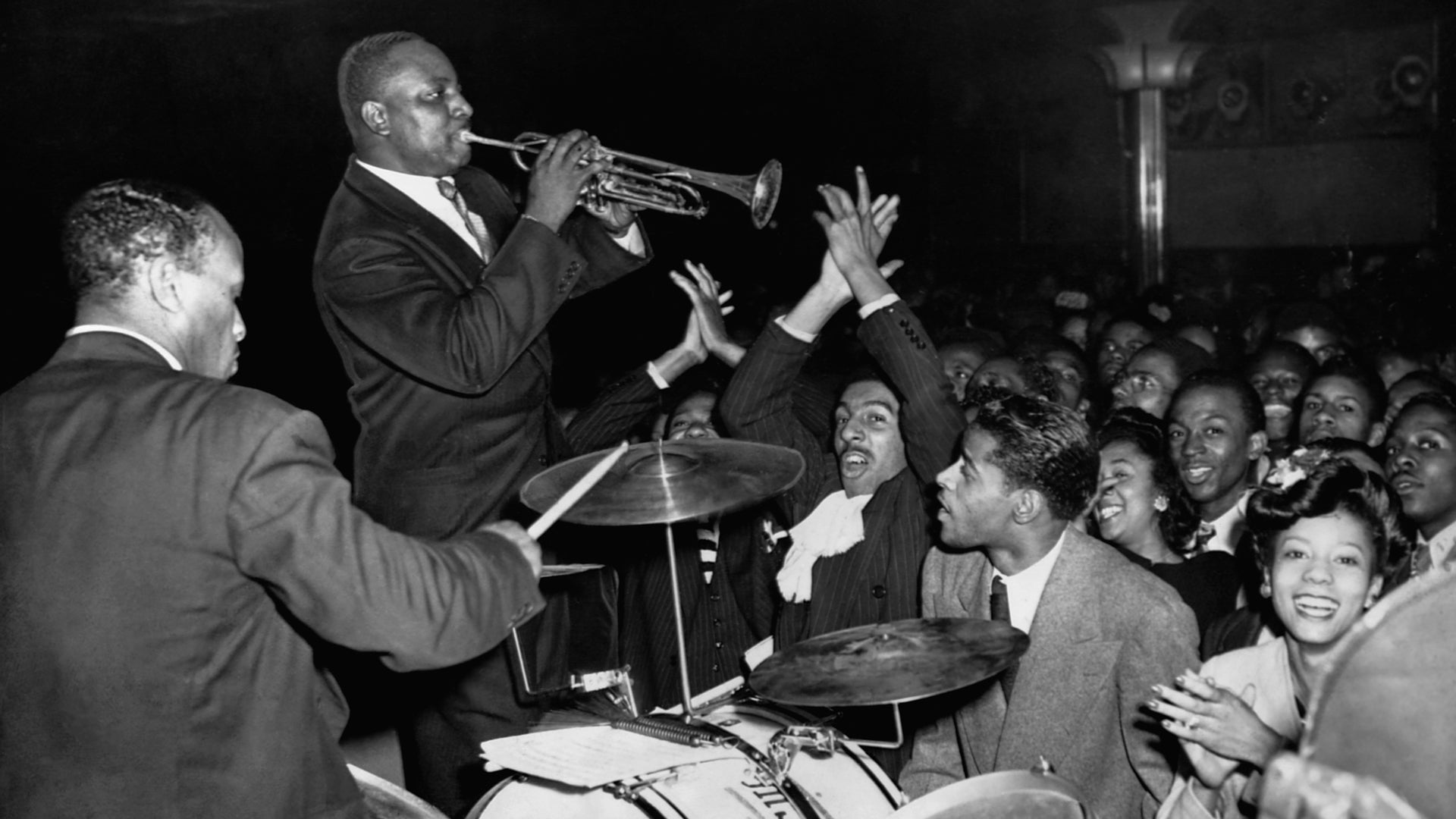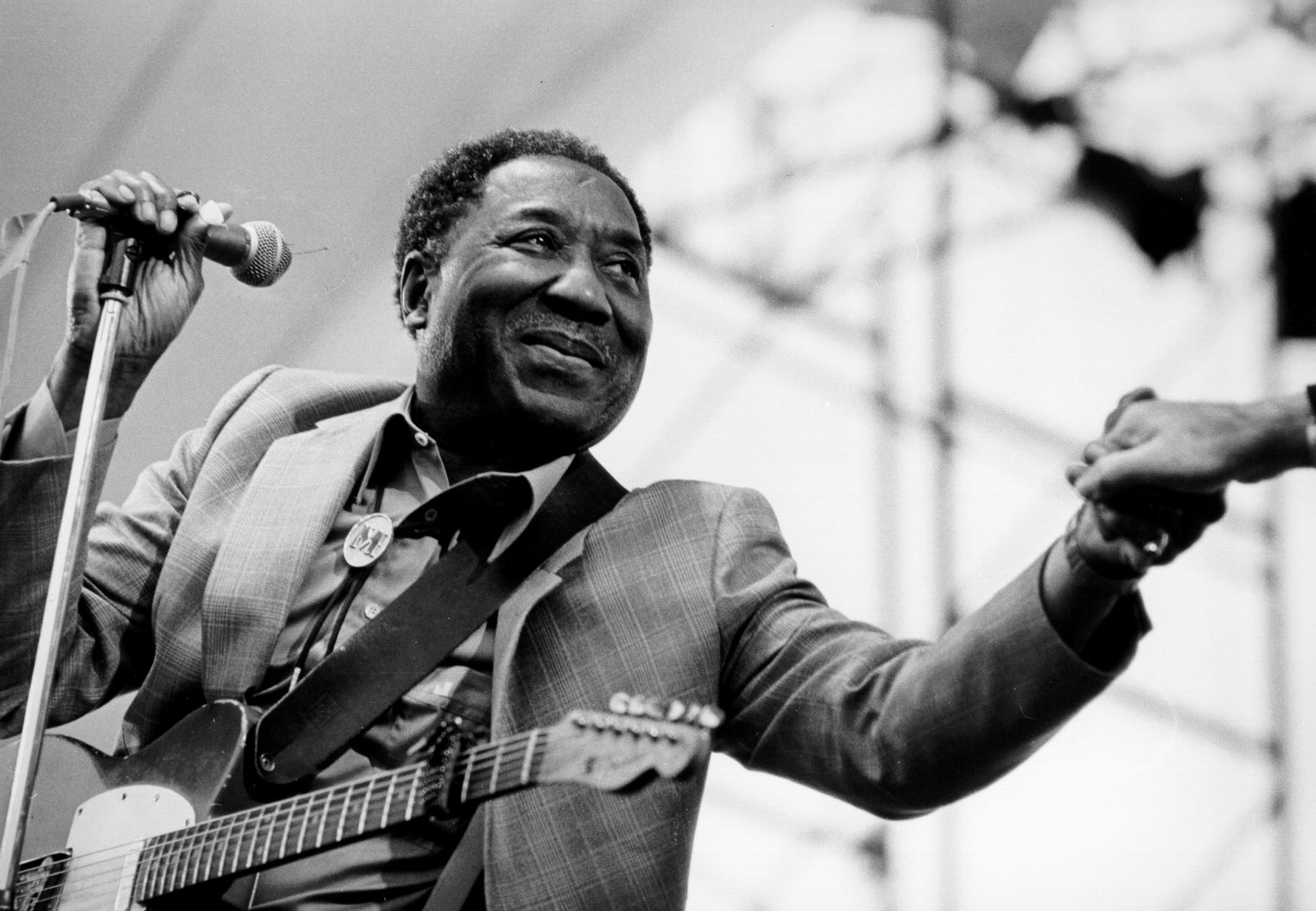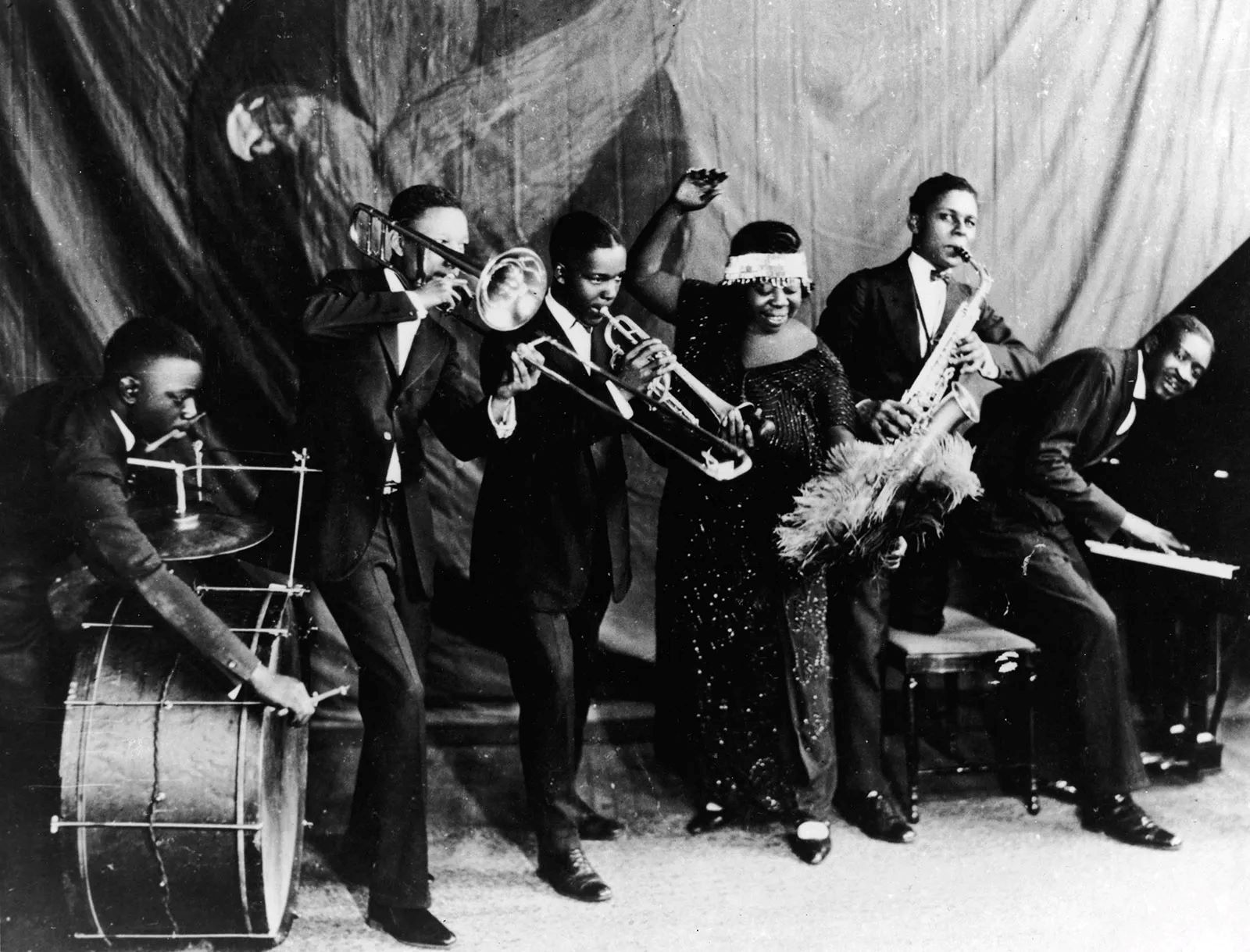

Jazz
Where And When Did Jazz Originate
Modified: February 24, 2024
Discover the origins of jazz and its birthplace and time. Explore the rich history and evolution of this iconic music genre.
(Many of the links in this article redirect to a specific reviewed product. Your purchase of these products through affiliate links helps to generate commission for AudioLover.com, at no extra cost. Learn more)
Table of Contents
Introduction
Jazz, an art form that originated in the early 20th century, is known for its improvisation, syncopation, and unique blend of African, European, and American musical traditions. It has been called “America’s classical music” and has had a profound impact on the cultural landscape of the world.
With its roots deeply planted in African musical traditions, jazz emerged as a creative and expressive outlet for African Americans during a time of segregation and racial discrimination. It served as a means of cultural preservation and resistance, as well as a source of joy and celebration.
The birthplace of jazz is often traced back to New Orleans, a city known for its vibrant music scene and diverse cultural influences. The unique combination of African rhythms, European harmonies, and American brass band traditions came together to create a distinct musical style that would soon captivate audiences around the world.
Early jazz pioneers such as Louis Armstrong, Jelly Roll Morton, and King Oliver developed a new style of music that blended ragtime, blues, and brass band music. This innovative approach, characterized by improvisation and collective improvisation, became the foundation of jazz.
The 1920s brought about a period of rapid change, known as the Jazz Age or the Roaring Twenties. Jazz became synonymous with the carefree and rebellious spirit of the era, with speakeasies and dance halls packed with jazz bands and enthusiastic dancers.
As jazz spread across America, it found new homes and thrived in cities like Chicago and Kansas City. These urban centers became hotbeds of jazz activity, with bustling nightclubs and jam sessions fueling the creative energy of musicians.
The swing era of the 1930s and 1940s saw jazz evolve into a more orchestrated and danceable style. Big bands led by musicians such as Duke Ellington, Count Basie, and Benny Goodman dominated the music scene, with their infectious rhythms and lively improvisations.
Following the swing era, the 1940s and 1950s witnessed a revolution in the form of bebop. Musicians like Charlie Parker, Dizzy Gillespie, and Thelonious Monk pushed the boundaries of jazz with their complex melodies, rapid tempos, and intricate improvisations.
The 1950s also saw the emergence of cool jazz and west coast jazz, which sought to create a more relaxed and subdued atmosphere. Musicians like Miles Davis and Chet Baker experimented with different textures and harmonies, giving birth to a new and introspective sound.
In the 1960s and 1970s, jazz fused with other genres, such as rock, funk, and Latin music, giving rise to jazz fusion. Artists like Miles Davis, Herbie Hancock, and Weather Report pioneered this genre, incorporating electric instruments, synthesizers, and experimental techniques.
At the same time, avant-garde jazz emerged, with musicians like John Coltrane and Ornette Coleman pushing the boundaries of jazz by incorporating free improvisation, unconventional structures, and dissonant harmonies.
Today, jazz continues to evolve and thrive, with a diverse range of styles and subgenres. It remains a powerful and influential form of music, capable of evoking a wide range of emotions and connecting people across cultures and generations.
In this article, we will delve deeper into the rich history of jazz, exploring its African roots, its origins in New Orleans, the influential pioneers, and the various eras and styles that have shaped the genre over the years.
African Roots of Jazz
To truly understand the origins of jazz, we must look back to the African continent, where the rhythmic and melodic foundations of the genre can be traced. The transatlantic slave trade brought millions of Africans to the Americas, and with them, they brought their rich musical traditions.
African music is characterized by its emphasis on rhythm, polyrhythms, call-and-response patterns, and improvisation. These elements would eventually become defining features of jazz. African musicians would use various percussion instruments, such as drums, rattles, and shakers, to create intricate and infectious rhythms.
During the era of slavery, African traditions intersected with European musical influences in the Americas. This fusion of musical styles laid the groundwork for the development of jazz. The European musical traditions introduced elements such as harmony, instrumentation, and formal structures that would merge with the African rhythmic sensibilities.
Field hollers, work songs, and spirituals were important musical expressions for enslaved Africans in the United States. These forms of music were often accompanied by clapped rhythms or rudimentary instruments made from found objects.
As African Americans began to gain more freedom and opportunities for cultural expression in the 19th century, elements of African musical traditions blended with European musical forms to give birth to new genres like ragtime and blues. Ragtime, characterized by its syncopated rhythms and lively piano melodies, laid the foundation for the emergence of jazz.
The blues, with its raw emotion and expressive lyrics, added another dimension to the evolving genre. Blues music often featured call-and-response patterns, an important element derived from African musical traditions.
Combined with the brass band traditions of New Orleans and the improvisational approach of African musicians, these musical forms paved the way for the birth of jazz.
The syncopated rhythms, polyphonic melodies, and vibrant improvisation that became hallmarks of jazz can be directly attributed to the African roots of the genre. Jazz musicians would draw on these traditions to create their own unique styles and develop improvisational techniques that would propel the genre forward.
Jazz, therefore, can be seen as a living testament to the resilience and creativity of African American musicians, who took their cultural heritage and transformed it into a groundbreaking and influential art form.
In the next section, we will explore the city of New Orleans and its role as the birthplace of jazz.
New Orleans Jazz
When discussing the origins of jazz, it is impossible to overlook the significant role that New Orleans played in shaping the genre. The city’s unique cultural and musical landscape provided fertile ground for the development and evolution of jazz.
New Orleans, with its diverse population and rich musical traditions, became a melting pot where African, European, and Caribbean influences intertwined. The city’s vibrant music scene and thriving nightlife offered a platform for musicians to experiment and collaborate, leading to the birth of a new musical style.
One of the key factors that contributed to the emergence of jazz in New Orleans was the presence of brass bands. These bands, often associated with funeral processions and other social events, combined elements of African rhythms, European instrumentation, and marching band traditions.
Leading the way in the early years of jazz was the legendary cornetist Buddy Bolden, who was known for his bold and innovative playing style. Bolden and his band were pioneers in using improvisation as a central component of their music, setting the stage for the jazz revolution that was to come.
The early jazz scene in New Orleans revolved around the Storyville district, a legalized red-light district where musicians would gather to perform in brothels, saloons, and dance halls. This environment fostered musical creativity and collaboration, with musicians from diverse backgrounds coming together to jam and exchange ideas.
Notable figures of New Orleans jazz include Louis Armstrong, Jelly Roll Morton, and King Oliver. Armstrong, in particular, is considered one of the most influential jazz musicians of all time, known for his virtuosic trumpet playing and distinctive singing style.
New Orleans jazz was characterized by its collective improvisation, with multiple musicians playing improvised solos simultaneously. This polyphonic approach created a rich and layered sound, enhanced by the distinct syncopated rhythms that were a defining feature of the genre.
The music of New Orleans jazz was often performed in small ensembles, known as “hot” bands, which typically consisted of a trumpet or cornet, clarinet, trombone, piano, bass, and drums. These bands would perform in venues throughout the city, entertaining audiences with their infectious rhythms and lively improvisations.
As New Orleans jazz gained popularity, it began to spread beyond the city’s borders. Musicians from New Orleans, such as King Oliver and Louis Armstrong, ventured out and brought their unique style to other parts of the country, influencing the development of jazz in cities like Chicago and New York.
The legacy of New Orleans jazz can still be felt in the contemporary jazz scene, with musicians drawing inspiration from its vibrant energy and innovative spirit. The city continues to celebrate its jazz heritage with events like the New Orleans Jazz & Heritage Festival, paying homage to the genre’s roots and ensuring its enduring legacy.
In the next section, we will explore the early jazz pioneers and their contributions to the growth and evolution of the genre.
Early Jazz Pioneers
The early pioneers of jazz, emerging from the rich musical landscape of New Orleans, played a crucial role in shaping and popularizing the genre. These musicians pushed the boundaries of traditional musical conventions and set the stage for the rapid evolution of jazz in the early 20th century.
One of the most influential figures in early jazz was Louis Armstrong. Born and raised in New Orleans, Armstrong’s virtuosic trumpet playing and charismatic stage presence revolutionized the genre. His groundbreaking solos, characterized by inventive phrasing and melodic improvisation, set a new standard for jazz musicians and paved the way for the era of the jazz soloist.
Jelly Roll Morton, a pianist, composer, and bandleader, is often credited as one of the first true jazz composers. His compositions, such as “Jelly Roll Blues” and “Black Bottom Stomp,” showcased his innovative use of syncopation, ensemble improvisation, and distinct New Orleans style.
Another significant early jazz pioneer was Joe “King” Oliver, a cornetist and bandleader. Oliver’s band, including a young Louis Armstrong, became widely popular in the 1920s with their unique, polyphonic sound. Their recordings, such as “Dippermouth Blues” and “West End Blues,” showcased the collective improvisation and intricate arrangements that would become hallmarks of early jazz.
Sidney Bechet, a master of both the clarinet and soprano saxophone, was known for his powerful and expressive playing style. His virtuosity and unique tone helped elevate the role of the clarinet in early jazz, making it a prominent solo instrument.
These early jazz pioneers, along with many others, recorded extensively and toured the United States, spreading the sounds and spirit of jazz to a wider audience. Their music and innovations laid the foundation for the genre’s growth and expansion in the years to come.
As the popularity of jazz grew, musicians from other regions began to contribute to its development. In Chicago, musicians like King Oliver and Louis Armstrong made a significant impact on the jazz scene. In New York, the influence of artists like Bix Beiderbecke and Duke Ellington helped shape the Big Band era and contributed to the sophistication of jazz.
The recordings made by these early jazz pioneers captured the energy and creativity of the time. They showcased the immense talent of these musicians while also preserving a snapshot of the early development of jazz. Listening to these recordings today allows us to appreciate the ingenuity and artistry of these trailblazers.
Without the contributions of these early jazz pioneers, the genre would not have gained the recognition and popularity it enjoys today. Their innovations and creativity continue to inspire musicians and listeners, reminding us of the incredible impact that their music has had on the world of jazz.
In the next section, we will explore the Jazz Age and the Roaring Twenties, a time when jazz exploded in popularity and became synonymous with the spirit of the era.
The Jazz Age and the Roaring Twenties
The Jazz Age, which encompassed the Roaring Twenties, was a period of cultural transformation in the United States, and jazz played a central role in defining the spirit of the era. As the lively rhythms and infectious melodies of jazz spread across the country, it came to symbolize the carefree, rebellious, and hedonistic nature of the time.
The Roaring Twenties was a time of economic prosperity and social change. This newfound affluence allowed for increased leisure and entertainment opportunities, and jazz became the soundtrack to this era. The vibrant energy and improvisational nature of jazz perfectly captured the spirit of liberation and expression that characterized the time.
Jazz was performed in various settings during the Jazz Age, from speakeasies and dance halls to concert venues and theaters. These spaces provided a platform for both established jazz musicians and up-and-coming talent to showcase their skills and entertain audiences.
The popularity of jazz soared during this period, and it became the go-to music for social gatherings and dance parties. The dance crazes of the time, such as the Charleston and the Lindy Hop, were heavily influenced by the fast-paced rhythms and syncopation of jazz, creating a vibrant and dynamic dance culture.
Some of the most notable jazz musicians of the era emerged during the Roaring Twenties. Pioneers like Duke Ellington, Fletcher Henderson, and Louis Armstrong made significant contributions to the genre and left an indelible mark on the legacy of jazz.
Jazz also gained recognition through the new medium of radio, which allowed for widespread dissemination of music. Jazz broadcasts reached homes across America, bringing the sounds of jazz into people’s lives like never before and contributing to its mass appeal.
However, the rise of jazz was not without controversy. Many critics and conservatives viewed jazz as a corrupting influence on society, associating it with debauchery and immorality. Despite these criticisms, jazz continued to thrive and transcend boundaries.
The Jazz Age came to an end with the onset of the Great Depression in the 1930s, which brought about economic hardships and a shift in cultural priorities. However, the impact of the Jazz Age and its influence on shaping American culture and music cannot be overstated.
The Roaring Twenties and the Jazz Age represent a period of artistic and cultural revolution, where jazz became the embodiment of a new era of freedom and expression. The music of this time continues to captivate audiences and inspire musicians to this day.
In the next section, we will explore the spread of jazz across America and its influence on different regions of the country.
Spread of Jazz across America
After its emergence in New Orleans and the subsequent popularity during the Jazz Age, jazz quickly spread across America, capturing the hearts of people from all walks of life. As the 1920s progressed, the genre transcended regional boundaries and became a national phenomenon.
One of the key factors that contributed to the spread of jazz was the advancement of recording technology. With the availability of commercially recorded music, jazz could be enjoyed beyond the live performance settings, reaching a wider audience and gaining popularity across the country.
As jazz began to conquer new territories, it underwent local adaptations and incorporated regional influences. Different cities and regions started developing their own jazz scenes, incorporating local musical traditions and putting their own unique spin on the genre.
Chicago, known as the “New Orleans North,” became a major hub for jazz in the 1920s. Musicians from New Orleans, including King Oliver and Louis Armstrong, migrated to Chicago, bringing the distinctive sounds of New Orleans jazz with them. The city’s vibrant nightlife and thriving music scene provided a fertile ground for jazz to flourish.
Chicago jazz, often referred to as “hot jazz,” featured energetic ensembles and vibrant solos. Pioneering jazz musicians such as Jelly Roll Morton, Eddie Condon, and Earl Hines further contributed to the growth and development of the Chicago jazz scene, creating a distinct style that emphasized improvisation and expressive playing.
Simultaneously, another city that played a significant role in the spread of jazz was Kansas City. Situated in the heart of the Midwest, Kansas City became a melting pot of musical influences, blending ragtime, blues, and jazz. The city’s jazz scene was distinguished by its emphasis on swing rhythms, large ensembles, and a vibrant nightclub culture.
Notable artists like Count Basie, Bennie Moten, and Lester Young left their mark on the Kansas City jazz scene, fusing bluesy melodies with infectious swing grooves. The city’s unique musical identity attracted musicians from all over the country, making it a hotbed of creativity and innovation.
Other cities, including New York City, Detroit, and Los Angeles, also experienced the spread of jazz and developed their own unique jazz scenes. Harlem in New York City became an epicenter of jazz during the Harlem Renaissance, with legendary venues like the Cotton Club hosting iconic jazz performances.
Jazz orchestras, often led by visionary bandleaders such as Duke Ellington and Fletcher Henderson, grew in popularity and played a significant role in spreading jazz beyond its original birthplace. The big band sound captured the imagination of audiences nationwide, featuring vibrant arrangements, complex harmonies, and orchestral improvisation.
Jazz also found its way into the emerging mediums of radio and film. Radio broadcasts and film soundtracks exposed a broader audience to jazz music, contributing to its growing popularity and cultural significance.
The spread of jazz across America not only broadened its fan base but also contributed to the ever-evolving nature of the genre. It incorporated regional influences, absorbed new musical elements, and diversified into subgenres like swing, bebop, and cool jazz.
This widespread influence and adaptation ensured that jazz remained a dynamic and constantly evolving genre, capable of embracing new styles and innovations while retaining its core improvisational spirit.
In the next sections, we will explore the development of jazz in Chicago and Kansas City, two cities that had a profound impact on the evolution of the genre.
Jazz in Chicago and Kansas City
Chicago and Kansas City were two cities that played a vital role in the development and evolution of jazz. These urban centers became hotbeds of musical activity, nurturing unique jazz scenes that left an indelible mark on the genre.
Chicago, often referred to as the “New Orleans North,” became a significant jazz hub in the 1920s. Musicians from New Orleans, including King Oliver and Louis Armstrong, migrated to Chicago, bringing their distinctive style and imparting a new energy to the city’s music scene.
The vibrant nightlife and thriving music scene of Chicago provided ample opportunities for jazz musicians to showcase their talents. Nightclubs like the Sunset Café and the Dreamland Café became renowned venues, attracting both local and national jazz acts.
Chicago jazz, often known as “hot jazz,” featured lively, energetic ensembles with a focus on vibrant solos. Pioneering musicians like Jelly Roll Morton, Eddie Condon, and Earl Hines brought their unique approaches to the genre, helping to shape the Chicago jazz sound.
Jazz in Chicago embraced improvisation and expressive playing, featuring dynamic arrangements and virtuosic solos. The city’s jazz scene became a vibrant cultural hub, reflecting the diversity and artistic energy of the city itself.
Meanwhile, Kansas City emerged as another influential jazz center during the early 20th century. Located in the heart of the Midwest, Kansas City blended elements of ragtime, blues, and jazz, creating a distinctive regional style.
Kansas City jazz emphasized swing rhythms, large ensembles, and a vibrant nightclub culture. The city’s unique musical identity attracted musicians from all over the country, making it a melting pot of creativity and innovation.
Count Basie, Bennie Moten, and Lester Young were among the notable artists who left their mark on the Kansas City jazz scene. The city’s musicians developed a powerful and bluesy approach to jazz, characterized by infectious swing grooves and soulful improvisations.
Jazz venues like the Blue Room and the Reno Club provided a platform for musicians to gather, jam, and collaborate. The vibrant nightlife of Kansas City, where jazz was a central attraction, created a fertile ground for musicians to experiment and refine their craft.
Both Chicago and Kansas City became important centers for recording, with many influential jazz records being produced in these cities. These recordings captured the essence of the local jazz scenes and offered a window into the innovative spirit and creativity of the musicians.
The contributions of Chicago and Kansas City to the jazz genre cannot be overstated. These cities served as crucibles for experimentation and collaboration, where musicians pushed the boundaries of the genre and explored new possibilities.
As jazz continued to evolve and diversify, both Chicago and Kansas City played important roles in shaping subsequent jazz movements and influencing musicians in other regions.
In the next sections, we will explore the Swing Era, the Bebop revolution, and the subsequent evolution of jazz into cool jazz and West Coast jazz.
The Swing Era
The Swing Era, which spanned from the mid-1930s to the late 1940s, was a transformative period for jazz. It marked a shift in the sound and style of the genre, as big bands with their energetic arrangements and infectious rhythms took center stage.
During this time, jazz became incredibly popular, not only among music enthusiasts but also among dancers. The swinging, propulsive rhythm of the music complemented the dance styles of the era, such as the Lindy Hop and the jitterbug. Big bands became the soundtrack to a generation, and jazz was embraced as the music of the people.
Two influential figures emerged during the Swing Era: Duke Ellington and Count Basie. These bandleaders had a tremendous impact on the development of jazz and the popularity of big band music.
Duke Ellington, a masterful composer and arranger, brought sophistication and innovation to the world of jazz. His orchestra, featuring exceptional soloists and unique compositions, produced timeless classics such as “Take the ‘A’ Train” and “Mood Indigo.” Ellington’s ability to blend diverse musical elements, experiment with orchestration, and infuse his music with a distinct sense of elegance set him apart as one of the most important figures of the Swing Era.
Count Basie, on the other hand, was known for his innovative use of minimalism and swing. His Kansas City-based orchestra became renowned for its tight ensemble playing and infectious, driving rhythm. Basie’s simple yet effective style laid the foundation for the Kansas City swing sound, characterized by its relaxed and bluesy approach.
Other notable bands and bandleaders of the Swing Era included Benny Goodman, Tommy Dorsey, and Glenn Miller. These big bands revolutionized the jazz scene, introducing new audiences to the genre and expanding its reach to mainstream audiences.
Swing music featured elaborate arrangements, improvised solos, and a strong emphasis on rhythm. It showcased the instrumental virtuosity of the musicians and allowed plenty of room for creativity and improvisation, both in ensemble playing and individual solos.
As the Swing Era progressed, jazz expanded its reach beyond the dance halls and into the airwaves. Radio broadcasts further popularized big band jazz, allowing listeners across the country to experience the excitement of live performances from the comfort of their homes.
However, the Swing Era eventually came to a close with the onset of World War II. The war led to a decline in live performances and the scarcity of resources, making it difficult for large ensembles to sustain themselves. Additionally, the rise of new musical genres such as bebop began to challenge the dominance of big band jazz.
Despite its eventual decline, the Swing Era remains a significant period in the history of jazz. It brought jazz to a wider audience, made household names of bandleaders and musicians, and helped establish jazz as an influential and distinctly American art form.
In the next section, we will explore the Bebop revolution and its impact on the trajectory of jazz.
The Bebop Revolution
The Bebop revolution marked a significant shift in the evolution of jazz. This post-World War II movement, which emerged in the 1940s, challenged the established norms of swing and represented a departure from the more accessible and dance-oriented big band sound.
Bebop was a reaction to the commercialization of jazz and aimed to reestablish the genre as a music of artistic innovation and individual expression. Musicians sought to break free from the constraints of popular appeal and explore new dimensions of harmony, rhythm, and improvisation.
At its core, Bebop was characterized by its fast tempos, complex melodies, and harmonies. It emphasized intricate, virtuosic improvisations and a more intellectual approach to composition. Musicians sought to push the boundaries of jazz, exploring dissonance and unconventional rhythmic patterns.
Many legendary musicians contributed to the Bebop movement, including saxophonist Charlie Parker, trumpeter Dizzy Gillespie, and pianist Thelonious Monk. These innovators developed a new musical vocabulary, introducing rapid chord changes, intricate melodic lines, and extended improvisations that challenged the status quo of swing.
The smaller ensemble format played a significant role in the Bebop revolution. Instead of large orchestras, small groups featuring a rhythm section and a few solo instruments became the norm. This format allowed for greater interplay between musicians and encouraged collaborative and interactive improvisation.
Bebop also shifted the focus from danceability to musicianship. It became more of an art music, appreciated by a smaller, dedicated audience of both musicians and avid listeners. The intellectual depth and technical demands of Bebop made it less accessible to the mainstream audience, but it ignited a new level of creativity and musicianship within the jazz community.
Despite its initial resistance from some critics and audiences, Bebop left a lasting impact on jazz. Its influence extended beyond the 1940s and influenced subsequent jazz movements, including cool jazz, hard bop, and beyond.
Bebop also paved the way for the idea of jazz as an art form, emphasizing individual artistic expression, harmonic explorations, and complex improvisations. It challenged conventional musical norms and set the stage for the continued evolution of jazz as a genre unafraid to push boundaries and defy expectations.
In the next section, we will explore the development of cool jazz and West Coast jazz, two subgenres that emerged in response to the frenetic energy of Bebop.
Cool Jazz and West Coast Jazz
In response to the fast-paced and complex nature of Bebop, cool jazz and West Coast jazz emerged as subgenres that prioritized a more relaxed and introspective approach to jazz. These movements, which gained prominence in the 1950s, offered a contrast to the frenetic energy of Bebop and explored new textures, harmonies, and arrangements.
Cool jazz, also known as West Coast jazz, drew inspiration from the melodic and laid-back sounds of Lester Young and the Miles Davis Nonet. Cool jazz musicians aimed to create a more relaxed and understated atmosphere, characterized by spacious arrangements, softer dynamics, and a focus on melodic beauty.
One of the key figures in cool jazz was trumpeter and composer Miles Davis. His landmark album “Birth of the Cool,” recorded in the late 1940s and released in 1957, had a significant impact on the development of the genre. The album showcased a nonet featuring innovative arrangements, sophisticated harmonies, and a cool, subdued aesthetic.
Other notable cool jazz artists included saxophonist Stan Getz, pianist Dave Brubeck, and guitarist Wes Montgomery. These musicians embraced a more relaxed and melodic approach to improvisation, often incorporating elements of classical music and modal jazz into their compositions and solos.
Meanwhile, West Coast jazz, as the name suggests, refers to the jazz scene that emerged on the West Coast of the United States, predominantly centered in Los Angeles and San Francisco. West Coast jazz embraced the cool aesthetic but also incorporated influences from Latin and Brazilian music, as well as a greater emphasis on arranged composition.
West Coast jazz musicians like saxophonist Gerry Mulligan and trumpeter Chet Baker became synonymous with the genre. Mulligan’s pianoless quartet and arrangements were known for their lush harmonies and light, airy textures, while Baker’s smooth and lyrical trumpet playing added to the cool and intimate atmosphere of the music.
Cool jazz and West Coast jazz represented a departure from the virtuosic and complex nature of Bebop. Instead, these subgenres allowed for a greater focus on melody and arrangements, offering a more accessible and melodic form of jazz.
These movements not only influenced the development of jazz but also had a significant impact on popular music. Cool jazz, with its soothing and atmospheric qualities, found a wide audience and influenced genres such as bossa nova and easy listening.
Cool jazz and West Coast jazz showcase the wide range of possibilities within the jazz genre. They exemplify the adaptability and innovative spirit of jazz musicians, who are constantly pushing the boundaries and exploring new artistic directions.
In the next sections, we will explore the subsequent developments of jazz, including the fusion era and avant-garde jazz.
Jazz Fusion and Avant-Garde Jazz
In the 1960s and 1970s, jazz underwent significant transformations with the rise of two distinct movements: jazz fusion and avant-garde jazz. These movements pushed the boundaries of the genre, incorporating elements from other musical styles and exploring new realms of experimentation.
Jazz fusion emerged as a fusion of jazz and other genres such as rock, funk, and Latin music. Musicians sought to break down the barriers between musical styles, blending electric instruments, synthesizers, and intricate arrangements. This new wave of jazz drew influence from the boundary-pushing experiments of artists like Miles Davis and Herbie Hancock.
Miles Davis, a central figure in the jazz fusion movement, released albums like “In a Silent Way” and “Bitches Brew”, which featured a fusion of jazz improvisation with elements of rock and electric instruments. These albums helped ignite the fusion movement, inspiring a new generation of musicians to explore the possibilities of merging jazz with other genres.
The fusion movement also saw the rise of influential bands and artists such as Weather Report, Chick Corea’s Return to Forever, and Mahavishnu Orchestra. These groups incorporated intricate compositions and complex structures, combining the virtuosic improvisations of jazz with the dynamic energy of rock and funk.
Avant-garde jazz, on the other hand, took jazz in a more exploratory and experimental direction. Also known as free jazz or “the new thing,” avant-garde jazz pushed the boundaries of traditional jazz conventions, emphasizing free improvisation, unconventional structures, and dissonant harmonies.
Artists like John Coltrane, Ornette Coleman, and Albert Ayler became significant figures within the avant-garde jazz movement. They challenged established notions of melody, harmony, and rhythm, exploring new ways of expressing themselves through their instruments.
Avant-garde jazz embraced a sense of spontaneity and freedom. Musicians eschewed traditional song forms and looked to create in-the-moment interactions between band members. The music often featured extended solos, atonal melodies, and intense emotional expression.
While avant-garde jazz faced some resistance from audiences and critics due to its departure from traditional jazz structures, it has had a lasting impact on the genre. It opened doors to further experimentation and influenced subsequent movements in jazz and other genres.
Both jazz fusion and avant-garde jazz showcased the innovative and elastic nature of jazz, proving that the genre could evolve and incorporate elements from various musical styles. These movements expanded the sonic possibilities of jazz, attracting new audiences and inspiring future generations of musicians.
In the subsequent sections, we will wrap up our exploration of jazz by discussing its ongoing legacy, its enduring impact on the music world, and its continued influence in contemporary jazz.
Conclusion
Jazz, with its rich history and diverse subgenres, remains a significant and influential music genre that continues to captivate audiences worldwide. From its African roots and the vibrant jazz scene of New Orleans, to the swing era, the bebop revolution, and the subsequent developments of cool jazz, West Coast jazz, fusion, and avant-garde jazz, jazz has constantly evolved and pushed the boundaries of musical expression.
Throughout its journey, jazz has acted as a cultural agent, reflecting the social, political, and artistic climate of the times. It has been a voice for marginalized communities, a vehicle for creative expression, and a symbol of resilience and resistance.
The contributions of jazz pioneers, such as Louis Armstrong, Duke Ellington, Charlie Parker, and Miles Davis, have left an indelible mark on the genre. Their innovations, improvisations, and unique sounds have inspired generations of musicians and shaped the evolution of jazz.
Jazz has also transcended geographical boundaries, spreading its infectious rhythms from New Orleans to Chicago, Kansas City, and beyond. Its influence has resonated on both coasts of the United States and has become a universal language for musicians around the world.
Moreover, jazz has influenced and interacted with other musical genres, blending with rock, funk, Latin, and classical music, among others. This cross-pollination has resulted in the creation of exciting and innovative sounds, pushing the boundaries of what jazz can be.
Today, jazz continues to thrive, with contemporary artists pushing the genre even further. They experiment with new styles, incorporate electronic elements, and explore diverse cultural influences, all while maintaining the spirit of improvisation and individual expression that defines jazz.
Furthermore, jazz festivals, clubs, and educational programs dedicated to preserving and promoting the genre ensure that its legacy remains alive and accessible to new generations of musicians and audiences.
As we look to the future, jazz will undoubtedly continue to evolve, reflect the changing times, and inspire new waves of creativity. Its ability to adapt, innovate, and cross boundaries showcases the power and vitality of this remarkable form of music.
Whether you’re a seasoned jazz enthusiast or new to the genre, exploring the rich history and diverse subgenres of jazz will undoubtedly lead to a deeper appreciation and enjoyment of this incredible musical art form.

